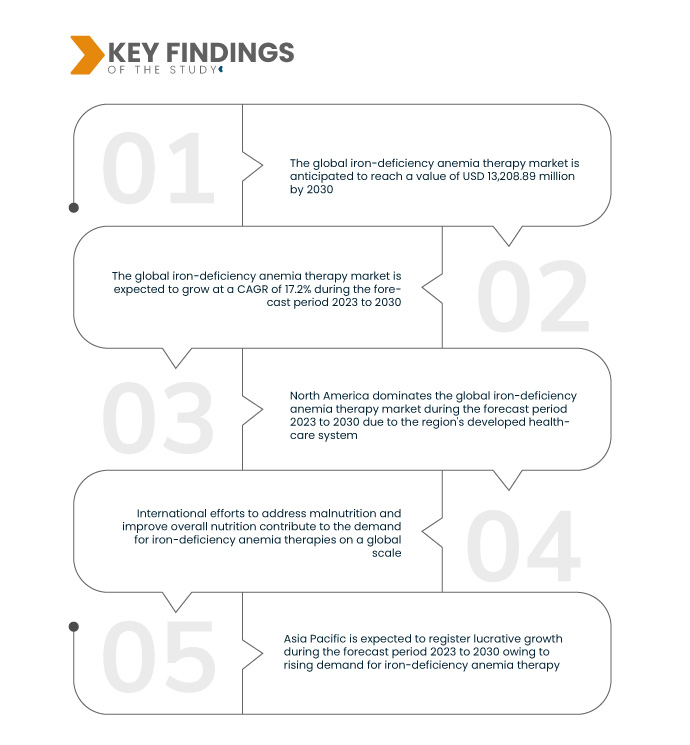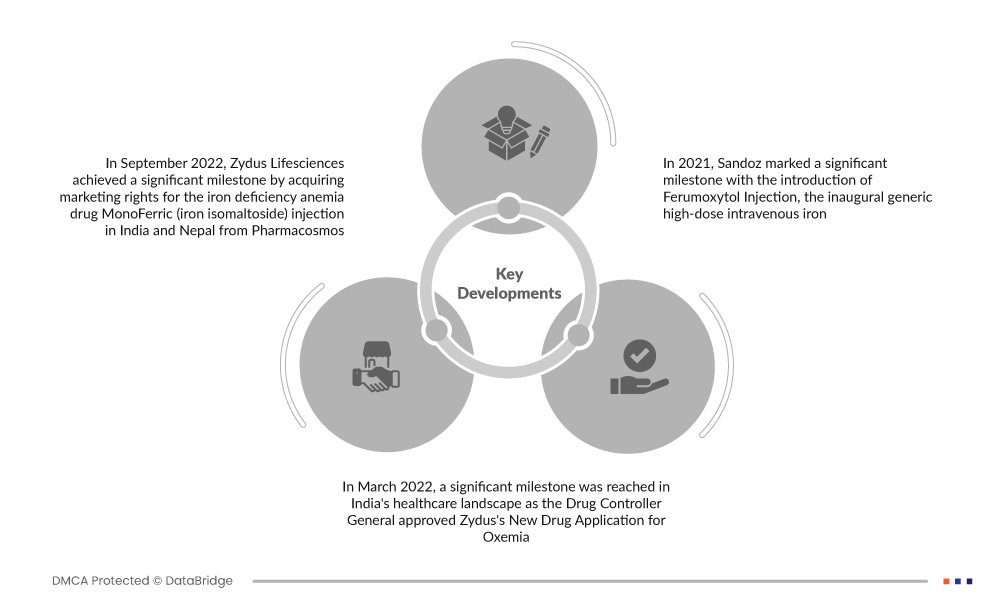A anemia é definida como uma baixa concentração de hemoglobina no sangue. É um problema de saúde que afeta todos os setores económicos do mundo, desde os países de baixo, médio e alto rendimento. consequências adversas significativas da anemia para a saúde, a par de piores impactos no desenvolvimento económico e social.
A anemia ocorre devido a várias etiologias, sendo a causa mais comum a deficiência de ferro. Aproximadamente 50% dos casos de anemia são causados por deficiência de ferro, mas a proporção varia provavelmente devido a vários fatores.
Outras causas de anemia incluem outras deficiências de micronutrientes (por exemplo, vitaminas A , folato, riboflavina e B12), infeções crónicas e agudas (por exemplo, cancro, tuberculose, malária e VIH) e perturbações adquiridas ou hereditárias que afetam a síntese de hemoglobina, a produção de glóbulos vermelhos (RBC) ou a sobrevivência.
Diz-se que a anemia por deficiência de ferro é a forma mais comum de anemia encontrada em todo o mundo. Nesta condição, o sangue não tem glóbulos vermelhos (RBCs) saudáveis suficientes, cuja função é transportar oxigénio para os tecidos do organismo. A anemia por deficiência de ferro é causada pela insuficiência de ferro.
A falta de nutrição adequada e várias inflamações no organismo que causam má absorção de ferro levam a um aumento da prevalência da anemia por deficiência de ferro.
Aceda ao relatório completo em https://www.databridgemarketresearch.com/reports/global-iron-deficiency-anemia-therapy-market
A Data Bridge Market Research analisa que o mercado global de terapêutica para a anemia ferropriva deverá atingir os 10,08 mil milhões de dólares até 2031, face aos 4,86 mil milhões de dólares em 2023, crescendo a um CAGR de 10,0% no período previsto de 2024 a 2031.
Principais conclusões do estudo
Âmbito do Relatório e Segmentação de Mercado
Métrica de Reporte
|
Detalhes
|
Período de previsão
|
2024 a 2031
|
Ano base
|
2023
|
Ano Histórico
|
2022 (Personalizável 2016-2021)
|
Unidades quantitativas
|
Receita em biliões de dólares americanos
|
Segmentos abrangidos
|
Terapia (Terapia Parentérica com Ferro e Terapia Oral com Ferro), Área de Terapia (Obstetrícia e Ginecologia, Doenças Renais , Insuficiência Cardíaca Congestiva (ICC) , Oncologia , Doença Inflamatória Intestinal e Outras), População (Adultos, Geriátricos e Pediátricos), Utente Final (Hospitais, Clínicas Especializadas, Ambientes de Assistência Domiciliária e Outros), Canal de Distribuição (Farmácia Hospitalar, Drogarias e Farmácias de Retalho e Farmácias Online)
|
Países abrangidos
|
México, Canadá, EUA, Reino Unido, Alemanha, Itália, França, Espanha, Bélgica, Suíça, Turquia, Rússia, Holanda, Resto da Europa, Índia, China, Japão, Austrália, Tailândia, Malásia, Coreia do Sul, Filipinas, Singapura, Indonésia, Resto da Ásia-Pacífico, Argentina, Brasil, Resto da América do Sul, África do Sul, Egito, Arábia Saudita, Emirados Árabes Unidos, Israel, Resto do Médio Oriente e África
|
Participantes do mercado abrangidos
|
Vifor Pharma Ltd. (Suíça), DAIICHO SANKYO COMPANY LIMITED (Japão), AFT Pharmaceuticals. (Nova Zelândia), Sanofi (França), Pfizer Inc. (EUA), Akebia Therapautics Inc. (EUA), Alkem. (Índia), Aspen Pharmacare Australia Pty Ltd. (Austrália), Blackmores (Austrália), Farlex (Índia), entre outros
|
Pontos de dados abordados no relatório
|
Para além dos insights sobre os cenários de mercado, tais como o valor de mercado, a taxa de crescimento, a segmentação, a cobertura geográfica e os principais participantes, os relatórios de mercado selecionados pela Data Bridge Market Research incluem também análises aprofundadas de especialistas, epidemiologia dos doentes, análise de pipeline, análise de preços e estrutura regulamentar.
|
Análise de Segmentos
O mercado global de terapia para a anemia ferropriva está segmentado em cinco segmentos notáveis com base na terapia, área de terapia, população, utilizador final e canal de distribuição.
- Com base na terapêutica, o mercado está segmentado em terapêutica parentérica de ferro e terapêutica oral de ferro
Em 2024, prevê-se que o segmento da terapêutica parentérica com ferro domine o mercado global de terapêutica para a anemia ferropriva
Em 2024, prevê-se que o segmento da terapêutica parentérica com ferro domine o mercado com uma quota de mercado de 57,83% devido à crescente preferência pela terapêutica parentérica.
- Com base na área terapêutica, o mercado está segmentado em obstetrícia e ginecologia , doenças renais, insuficiência cardíaca congestiva (ICC), oncologia, doença inflamatória intestinal, outras
Em 2024, prevê-se que o segmento da obstetrícia e ginecologia domine o mercado global de terapêutica para a anemia ferropriva
Em 2024, prevê-se que o segmento da obstetrícia e ginecologia domine o mercado com uma quota de mercado de 37,97% devido à crescente prevalência de problemas de obstetrícia e ginecologia.
- Com base na população, o mercado está segmentado em adultos, geriátricos e pediátricos. Em 2024, o segmento adulto dominará o mercado com uma quota de mercado de 42,50%
- Com base no utilizador final, o mercado está segmentado em hospitais, clínicas especializadas, ambientes de cuidados domiciliários e outros. Em 2024, o segmento hospitalar dominará o mercado com uma quota de mercado de 57,26%
- Com base no canal de distribuição, o mercado está segmentado em licitação direta, vendas a retalho e vendas online. Em 2024, o segmento de licitação direta dominará o mercado com uma quota de mercado de 56,46%
Principais jogadores
A Data Bridge Market Research analisa a Vifor Pharma Ltd. (Suíça), a DAIICHO SANKYO COMPANY LIMITED (Japão) e a AFT Pharmaceuticals. (Nova Zelândia), Sanofi (França), Pfizer Inc. (EUA), como as principais empresas que operam no mercado global de terapêutica para a anemia ferropriva.
Desenvolvimentos de mercado
- Em junho de 2023, a GSK recebeu um parecer positivo do Comité de Medicamentos de Uso Humano (CHMP), recomendando a autorização do daprodustat para o tratamento da anemia sintomática associada à doença renal crónica (DRC) em adultos submetidos a diálise de manutenção crónica. Esta recomendação marca um passo significativo para fornecer uma nova opção terapêutica para o tratamento da anemia em doentes com DRC em diálise de longa duração, abordando uma importante necessidade médica não satisfeita nesta população.
- Em março de 2024, o Vafseo foi aprovado pela FDA dos EUA para o tratamento da anemia devido a doença renal crónica em doentes adultos dependentes de diálise. A CSL Vifor tem o prazer de informar que a sua parceira Akebia Therapeutics, Inc. anunciou que a Food and Drug Administration (FDA) dos EUA aprovou os comprimidos de Vafseo (vadadustat) para o tratamento da anemia devido a doença renal crónica (DRC) em adultos que estejam a receber diálise há pelo menos três meses. O Vafseo é um inibidor oral da prolil hidroxilase do fator induzível por hipoxia (HIF-PHI) desenvolvido pela Akebia
- Em fevereiro de 2024, a Lupin lançou um spray nasal de cianocobalamina, 500 mcg/spray (um spray por dispositivo), após ter recebido a aprovação da Food and Drug Administration dos Estados Unidos (US FDA)
- Em dezembro de 2023, a Novartis recebeu a aprovação da FDA para o Fabhalta (iptacopan), que oferece uma melhoria superior da hemoglobina na ausência de transfusões como primeira monoterapia oral para adultos com HPN. Foi anunciado que a Food and Drug Administration (FDA) dos EUA aprovou o Fabhalta (iptacopan) como a primeira monoterapia oral para o tratamento de adultos com Hemoglobinúria Paroxística Noturna (HPN). O Fabhalta é um inibidor do fator B que atua proximalmente na via alternativa do complemento do sistema imunitário, proporcionando um controlo abrangente da destruição dos glóbulos vermelhos (RBC) dentro e fora dos vasos sanguíneos (hemólise intra e extravascular [IVH e EVH])
- Em março de 2024, o Ferinject foi aprovado pela Health Canada para o tratamento da anemia ferropriva em doentes adultos e pediátricos e da deficiência de ferro em doentes adultos com insuficiência cardíaca e anunciou que a Health Canada autorizou o Ferinject (carboximaltose férrica) para o tratamento intravenoso (IV) da anemia ferropriva em doentes adultos e pediátricos com um ano de idade ou mais, quando as preparações orais de ferro não são toleradas ou são ineficazes, bem como para o tratamento da deficiência de ferro em doentes adultos com insuficiência cardíaca.
Análise de País
Geograficamente, os países abrangidos no relatório do mercado global de terapêutica para a anemia ferropriva são o México, Canadá, EUA, Reino Unido, Alemanha, Itália, França, Espanha, Bélgica, Suíça, Turquia, Rússia, Países Baixos, resto da Europa, Índia, China, Japão, Austrália, Tailândia, Malásia, Coreia do Sul, Filipinas, Singapura, Indonésia, resto da Ásia-Pacífico, Argentina, Brasil, resto da América do Sul, África do Sul, Egito, Arábia Saudita, Emirados Árabes Unidos, Israel, resto do Médio Oriente e África.
De acordo com a análise de pesquisa de mercado da Data Bridge:
Espera-se que a América do Norte domine o mercado global de terapêutica para a anemia ferropriva
Espera-se que a América do Norte domine o mercado da terapêutica para a anemia ferropriva devido ao aumento dos gastos com a saúde.
Espera-se que a Ásia-Pacífico seja a região de crescimento mais rápido no mercado global de terapia para a anemia ferropriva
Prevê-se que a Ásia-Pacífico seja o país com o crescimento mais rápido devido à sua crescente infra-estrutura de cuidados de saúde.
Para obter informações mais detalhadas sobre o relatório do mercado global de terapêutica para a anemia ferropriva, clique aqui – https://www.databridgemarketresearch.com/reports/global-iron-deficiency-anemia-therapy-market












